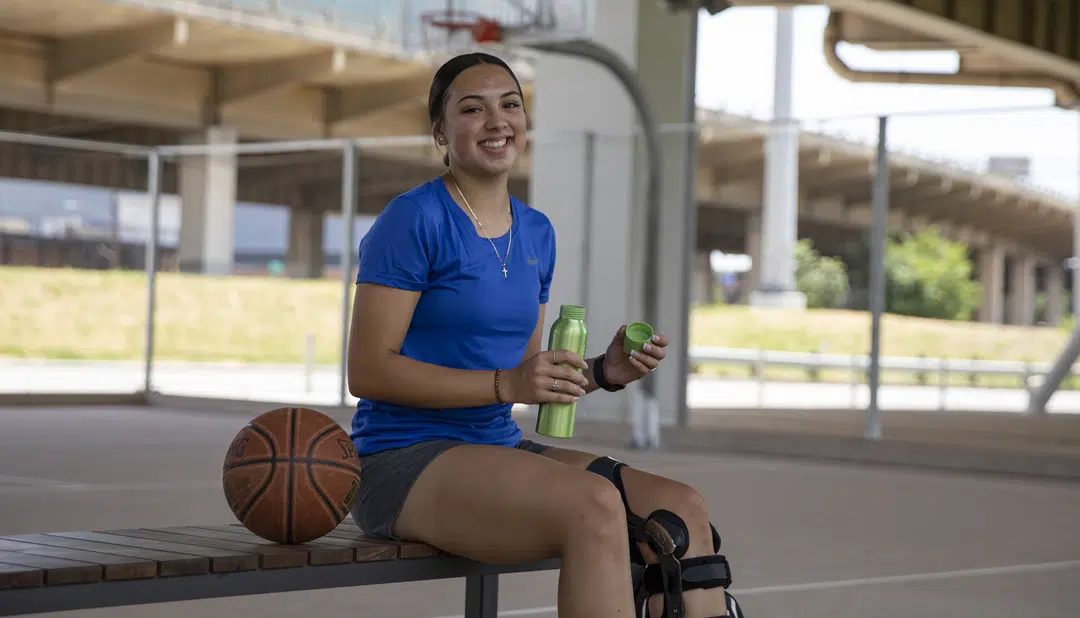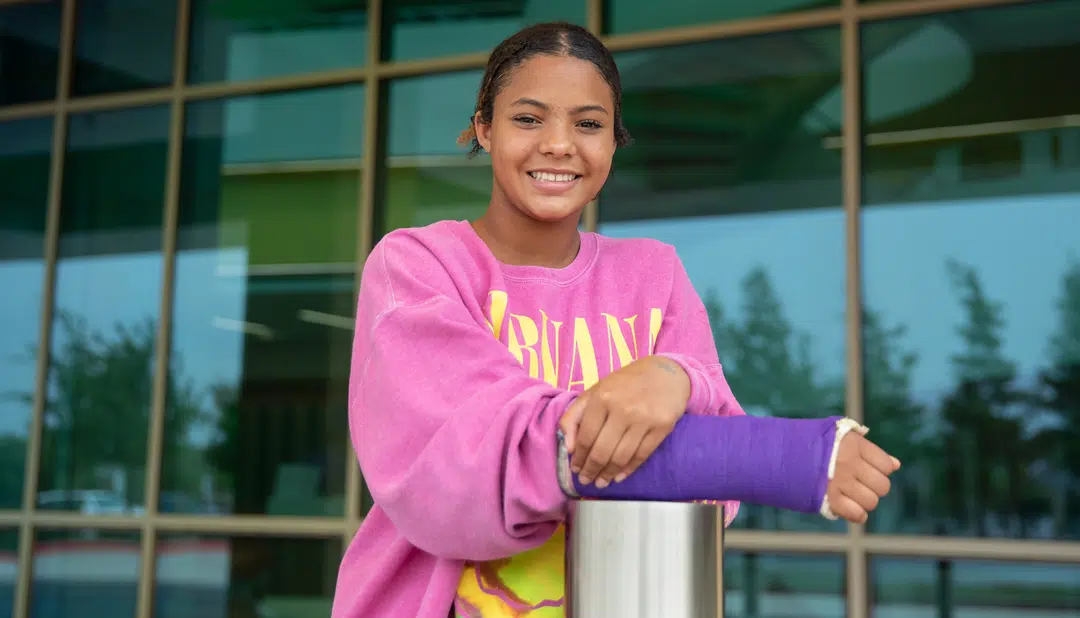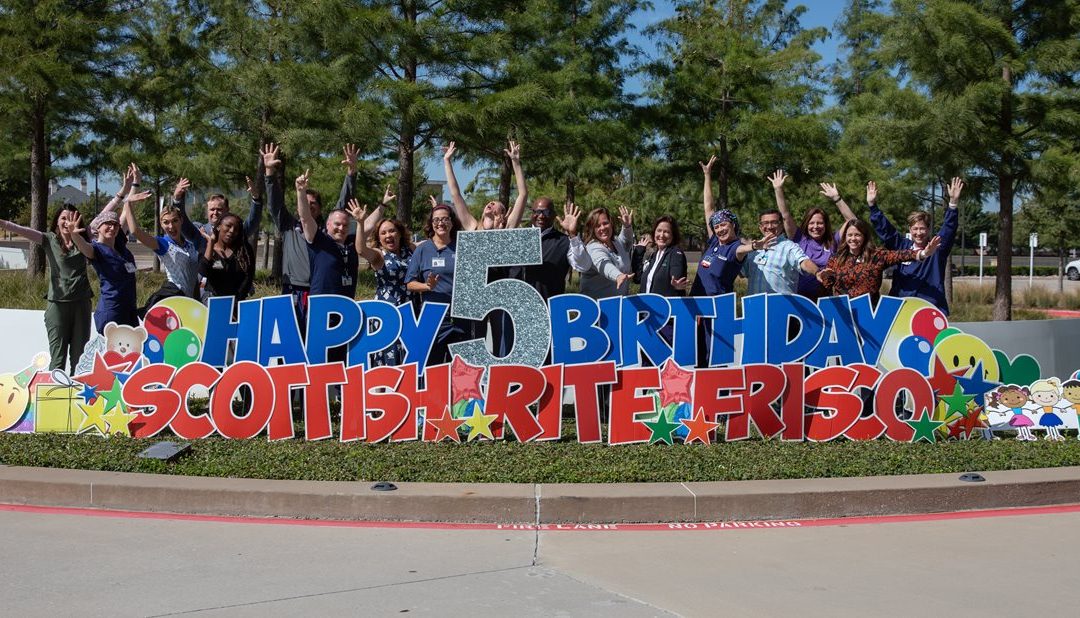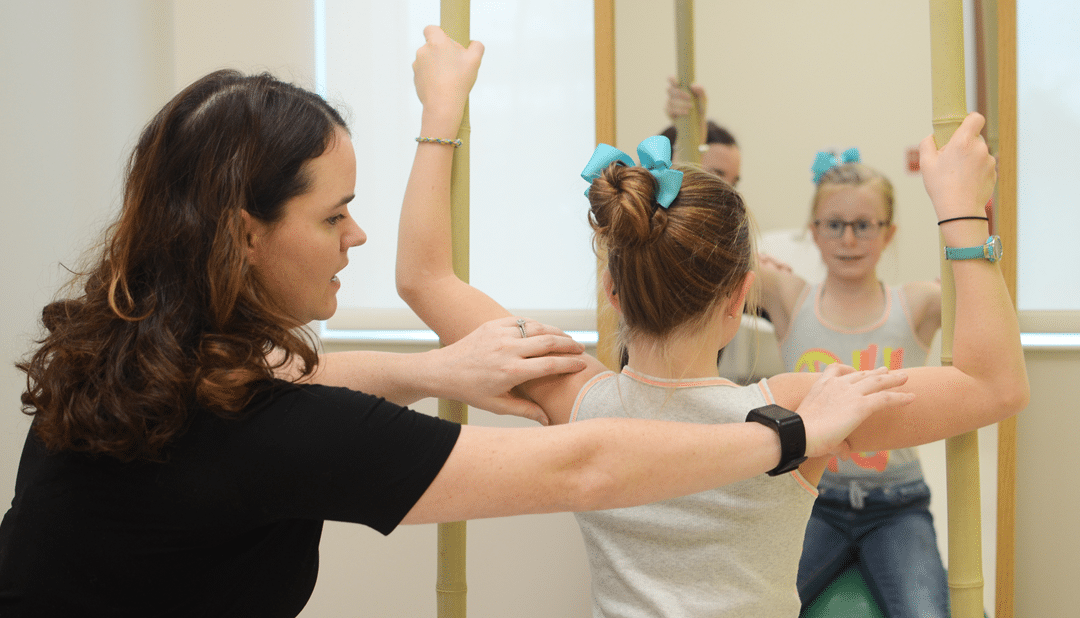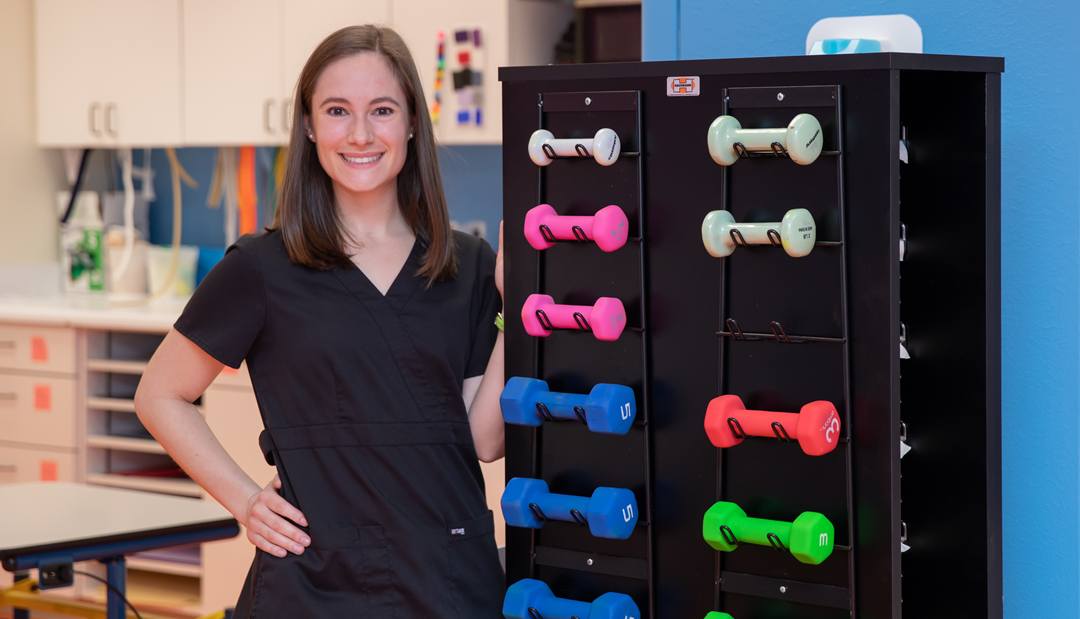
Get to Know our Staff: Hayley Shelton, Physical Therapist
What is your job title/your role at Scottish Rite for Children?
Physical Therapist
What do you do on a daily basis or what sort of duties do you have at work?
I provide physical therapy services to patients who visit the Ambulatory Care clinics by performing evaluations for home exercise programs, gait training, baseline functional assessments, and pre-operative evaluations. I also perform standardized performance tests and measures to objectively measure patients’ current functional status and to collect data for department research and quality improvement projects. Additionally, I perform screenings to determine if a patient has a need for formal skilled physical therapy services or equipment and bracing needs. Other duties include assisting with coordinating care and facilitating communication between the physical therapists in the Therapy Services department and the Ambulatory Care staff regarding our mutual patients and assisting in evaluations and treatments of patients in the inpatient and outpatient settings.
What was your first job? What path did you take to get here or what led you to Scottish Rite? How long have you worked here?
My first job as a PT was working in the acute care setting at a large hospital in the area where I treated adults with a variety of diagnoses. I really enjoyed the teamwork that comes from collaborating as a multidisciplinary team and learned how much this improves the quality of care a patient receives. My first experience at Scottish Rite occurred when I shadowed in the Therapy Services department prior to attending physical therapy school. The positive and cheerful atmosphere was unlike any healthcare setting I had experienced at the time and it made a lasting impression. I am thankful that I get to continue working in a collaborative setting in my role as a clinic therapist. I am coming up on my two year anniversary at Scottish Rite in May.
What do you enjoy most about Scottish Rite?
I enjoy getting to learn from and collaborate with the wonderful people in the Therapy Services department and all the ambulatory care teams. I also love that Scottish Rite prioritizes doing what is best for each patient regardless of a family’s ability to pay.
Tell us something about your job that others might not already know?
Since I work in clinic, the patients I see for PT are not pre-scheduled most of the time, so, each day brings new surprises and opportunities to learn and grow as a therapist.
Where is the most interesting place you’ve been?
I tend to travel to the same places every year, but my favorite place is Seaside, Florida.
What is your favorite game or sport to watch and play?
I look forward to watching the Summer Olympics every 4 years
If you could go back in time, what year would you travel to?
The 1950s-60s to see Julie Andrews perform live on Broadway
What three items would you take with you on a deserted island?
Sunglasses, water filter, the Bible
What’s one fun fact about yourself?
I danced in the Macy’s Thanksgiving Day Parade


